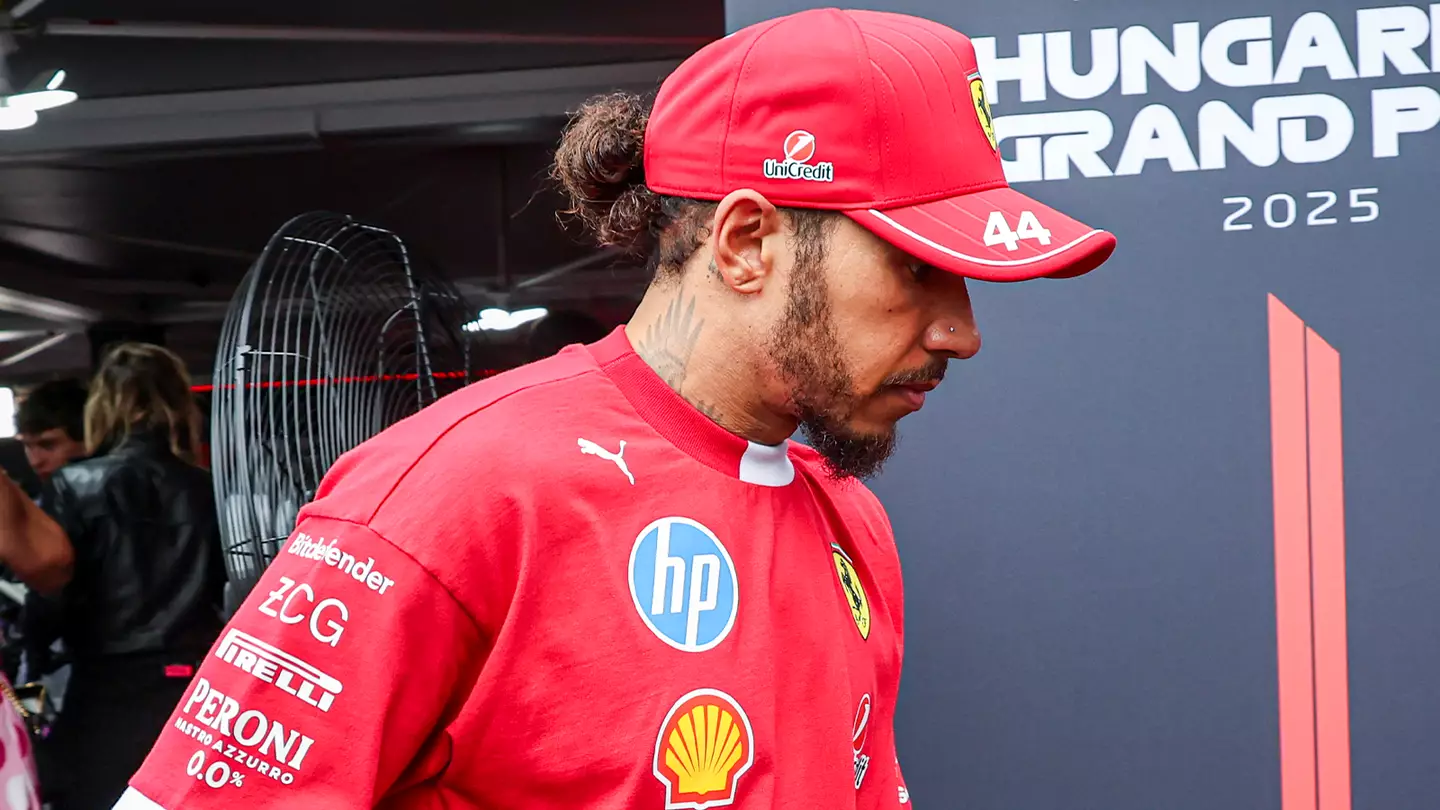The world of Formula 1 is a relentless arena of high-speed drama, where fortunes can turn in the blink of an eye.
The 2025 season has been a testament to this, defined by two starkly contrasting narratives: the meteoric rise of McLaren to championship dominance and the deeply personal struggle of a racing legend, Lewis Hamilton, in the scarlet red of Ferrari.
As the season barrels into its second half, the paddock is buzzing with a tension that extends far beyond the racetrack, fueled by shocking confessions, fierce rivalries, and the unbreakable spirit of competition.

At the pinnacle of the sport stands McLaren, a team reborn. After years of rebuilding, the Woking-based outfit has finally unlocked the full potential of its machinery, creating a car that is not just fast, but consistently formidable. With a significant lead in the constructor standings, McLaren has become the benchmark for excellence in 2025. Their success is not built on fleeting moments of brilliance, but on a foundation of exceptional race pace, uncanny consistency over long stints, and a masterful understanding of tire management—a combination that has left their rivals scrambling for answers.
The driver pairing of Lando Norris and Oscar Piastri has proven to be a masterstroke. Both young, hungry, and prodigiously talented, they have pushed each other to new heights, securing stunning pole positions and dominant front-row lockouts. Yet, beneath the surface of this success lies a fascinating vulnerability. The team’s Achilles’ heel, if one can call it that, appears to be its qualifying performance. While they have shown they can top the timesheets, the car’s behavior on the absolute limit is a tightrope walk.
Oscar Piastri, the Australian prodigy whose calm demeanor belies a fierce competitive streak, has been candid about the challenges. He revealed that even during pre-season testing, the car felt “very tricky to drive on the limit” during qualifying simulations. This knife-edge characteristic has persisted throughout the season, evident in challenging races like the Canadian Grand Prix. Piastri’s insight suggests that while McLaren’s race pace is in a league of its own, the fight for pole position remains a tantalizingly open affair. He anticipates that the qualifying sessions for the remainder of the season will be intensely tight, creating a thrilling unpredictability that could see surprise pole-sitters from rival teams. This dynamic adds a layer of suspense to every race weekend, reminding everyone that in Formula 1, nothing is guaranteed until the final lap.

While McLaren celebrates its ascent, a storm has been brewing at Maranello. The dream pairing of Lewis Hamilton and Ferrari, a move that sent shockwaves through the sport, has so far devolved into a public and painful struggle. The seven-time world champion, arguably the greatest driver of his generation, has found himself mired in the midfield, grappling with a car that has failed to meet expectations. The statistics are stark and unforgiving: fourteen appearances in Ferrari red, and not a single podium finish.
The simmering frustration boiled over at the Hungarian Grand Prix, a race that proved to be a new low point. After qualifying a dismal 12th, Hamilton finished the race in the same position, a result utterly incongruous with his legendary status. The aftermath saw a raw and unfiltered display of emotion from the champion. In a moment of startling vulnerability, Hamilton made what can only be described as “shock comments,” labeling himself “useless” and publicly questioning his place at the team, even suggesting that Ferrari might need to find a new driver.
The comments sent the F1 community into a frenzy. Was this the candid confession of a champion in crisis? A calculated move to galvanize his team? Or the first sign that the dream move to Ferrari was destined for failure? The speculation was rampant, painting a picture of a driver at a crossroads, battling not just his rivals on the track, but his own inner demons.
However, as the teams prepared to reconvene at the historic Zandvoort circuit, a different Lewis Hamilton emerged. Following the summer break, a period of rest and reflection, he issued a new statement that sought to quell the storm he had created. It was a message of resilience, gratitude, and renewed commitment. Hamilton spoke of the importance of the time off, of the chance to “rest and recharge,” and of finding strength in “truth and love.” His words painted a portrait of a man who had confronted his own doubts and emerged with a clearer perspective.

“Keep going even when it’s difficult,” he urged, a message seemingly directed as much to himself as to his millions of fans. This was not the statement of a driver ready to give up. It was a declaration of intent, a promise of his full and unwavering commitment to turning the tide in the second half of the 2025 season. The vulnerability was still there, but it was now tempered with a steely resolve. He was embracing the struggle, ready to fight his way back to the front.
This juxtaposition of McLaren’s clinical dominance and Hamilton’s emotional rollercoaster creates a compelling narrative for the remainder of the season. On one hand, you have a team at the peak of its powers, striving to maintain its edge while navigating the treacherous waters of qualifying. On the other, you have a living legend, armed with a renewed sense of purpose, determined to drag his iconic team back into contention.
The battle is not just for points and podiums; it’s a battle of philosophies, of engineering prowess versus human spirit. Can McLaren’s well-oiled machine continue to outpace the competition? Or can Lewis Hamilton, fueled by his raw honesty and champion’s heart, inspire a Ferrari resurgence that will once again set the Formula 1 world alight? As the lights go out at Zandvoort and beyond, every lap will be a chapter in this unfolding saga, a story of triumph, adversity, and the unyielding pursuit of greatness.





